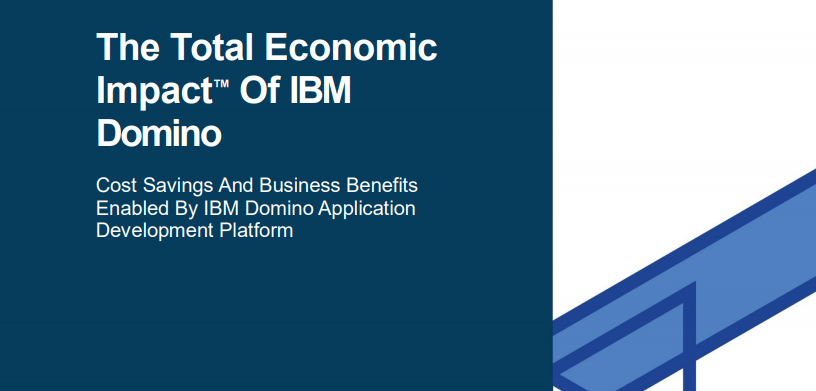
If you are looking for arguments about why you should stay on, or maybe even move to, Domino? Look no further than here!
It’s no secret that Domino has vanished from a lot of organisations in the past ten years. But there are still thousands of organisations using business critical Domino applications every day. Just in the small area where I live we have many, and I’m making a living out of it. The word on the street has been that Domino is dead, but it’s not. It’s not even resting or pining. It’s evolving, and the acquisition HCL did of it means that even more exciting things are happening in the near future.
Still, a lot of organisations are under strong pressure by everything from CEOs who have been brainwashed into thinking Sharepoint and Office 365 is the answer to everything (very often without asking what the questions were) to vendors claiming that the solutions they offer will be much better for you.
Don’t get me wrong, if you do a thorough analysis and you find out that Domino is not the way forward, by all means, do something about it. But do me a favor. Read the latest Forrester report about the total economic impact of IBM Domino first.
Here are som highlights from the companies that were interviewed:
- Businesses have saved $2.8 million in license costs of specialized software by providing a platform for building the needed functionality in-house. A lot of organisations just can’t get by with off the shelf products.
- Businesses have saved $1.3 million resource costs from implementing automation and workflow improvements. This enhances collaboration immensely
- Businesses have saved $822,225 in infrastructure costs by remaining on Domino
- IBM Domino provides the tools to quickly develop robust applications, 50% to 500% faster than on comparable platforms
- Applications built twenty years ago still function today, without any additional costs needed for upgrades, they are also backwards compatible, so solutions created on Domino V2 will work on the latest Domino V10
Forrester interviewed several Domino customers who have been using Domino for 16 years or more. These companies evaluate their strategic platform choices at least every third year. And they remain on Domino!
Here are som key points from the interviewees:
- Fast application development timelines
- Little to no upgrades required to existing Domino apps
- Lighter infrastructure as compared to what would be required for hosting apps
- Lower license costs as compared to alternative solutions
- Reliable performance of the Domino servers and apps
That last point is very important. Downtime costs a lot of money. This autumn I met some colleagues of mine from my previous job. They have moved from IBM Connections to a Sharepoint based solution and their email and documents are moved to Office 365. However, their sales, project and after sales applications are still running on Domino. They are in the process of webifying the most business critical solutions, and will therefore keep Domino for many, many years.
When I met these ex-colleagues, they teased me about Notes/Domino, but the CEO for After Sales then said: “You know, we’ve used Domino for almost 25 years, and it’s been the most stable solution we ever invested in!”
Or to quote some of the people interviewed in Forrester’s report (I know some of the people interviewed, and believe me, they do not suger coat their opinions about IBM when they are unnhappy):
On other platforms, you need to develop all the features yourself. With Domino, you receive a very stable framework with lots of pre-built functionalities. Domino allows you to develop applications faster and with less manual effort
About upgrades and impact for users:
The durability of the solutions supported the business’ midterm and long-term stability as we did not need a new tool every three or four years. Even though Domino had six major updates, users didn’t realize the change because their applications continued to work without disruption.
Workflow and automation is one of Domino’s biggest strengths:
Efficiencies and automations enabled by IBM Domino on average save each employee 10 minutes per day.
And the most true of all:
The organization would need five servers to replace one Domino server.
That is so true! I worked for an organisation that moved 3000 mail users from Domino to Exchange. What one mail server did on Domino, they needed ten (10!) Exchanges servers for.
You can read the entire report here.